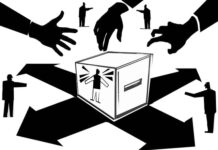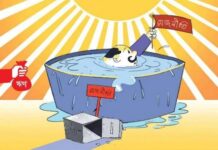
A decade ago, a couple where both members worked could pay house rent, send their children to school and maintain a reasonable standard of living and still have savings. Those days appear to be gone for good. The runaway inflation when it comes to the manner in which our kitchen market prices operate, the rate at which house rent appears to increase every year and the yearly hikes in utility service prices have all but put people in some income brackets in a situation where it is becoming increasingly untenable to live with families in Dhaka city.
CAB reinforces this with data. According to the association, the rent value of a two-room concrete house/apartment used to be Tk 10,800 in 2009 which had risen to an average of Tk 19,700 in the year 2016 (a rise of 82.4 percent in less than a decade). The cost of per unit of electricity has risen nearly 93 percent, water bill has gone up by 56 percent and increase in public transport per kilometre has gone up by 45 percent. When we look at food inflation, prices have actually risen several times each year over this period. Again, if we refer to CAB information, the price of coarse rice went up by Tk 12/kg (from Tk 23 to Tk 35) over this period and was trading at Tk 46/kg in the month of September. Mapping out all products in various categories is unnecessary to get an idea of how prices have increased exponentially over a seven-year period. Incomes unfortunately have not kept up with such increases and hence the problem.
The biggest casualty of all this of course is that people are unable to set aside a portion of their earnings as savings. Things are in fact at a stage that some income groups are in debt a major portion of the year and hence there is no question of savings. When we couple food inflation (the highest rise) along with other indicators, Dhaka residents are in a major fix, but the lower middle class and working class are hardest hit. When the price of utility services rises (power, water), this affects producers too. However, whatever extra costs incurred at production level are usually passed on to end users, i.e. retail consumers. But there are discrepancies here, particularly in the urban public transport sector. A fractional rise in cost of fuel is not corresponded by an equal rise in fare; it is usually much more. The same can actually be said about the pricing of products and services that an average resident uses. House rent for instance follows no set pattern and tenants are completely at the mercy of landlords. One cannot fully explain how wholesale and retail kitchen markets work in our country. Every time we suffer a natural calamity, we find ourselves at the short end of the stick—and as pointed out above, finding out the price of coarse rice (the biggest selling segment in the rice market) going up Tk 12 per kilo in the span of a month! The education sector, the bulk of which is dominated by the private sector, follows no set pattern when it comes to setting tuition fees. Beyond the regular monthly tuition fees of course is a slew of other “charges” that can range from “development fees” to whatever the institution deems fit.
It appears that we have built for ourselves a laissez-faire system which is defined in economics as: “abstention by governments from interfering in the workings of the free market.” That certainly looks to be the case for the majority of Dhaka’s populace. We have regulatory bodies and certain rules to look after consumers’ interests. However, these regulations are confined to print and there are hardly visible steps to implement them. People will continue to adapt to harder times—by consuming less, enjoying fewer city amenities, getting into more debt, etc. Until our policymakers actually start practising what they preach i.e. implementing laws enacted or rules formulated to protect consumers’ interests, people will be left to fend for themselves—as they always have—and the quality of life will continue to decline in Dhaka city.
source: New Age









